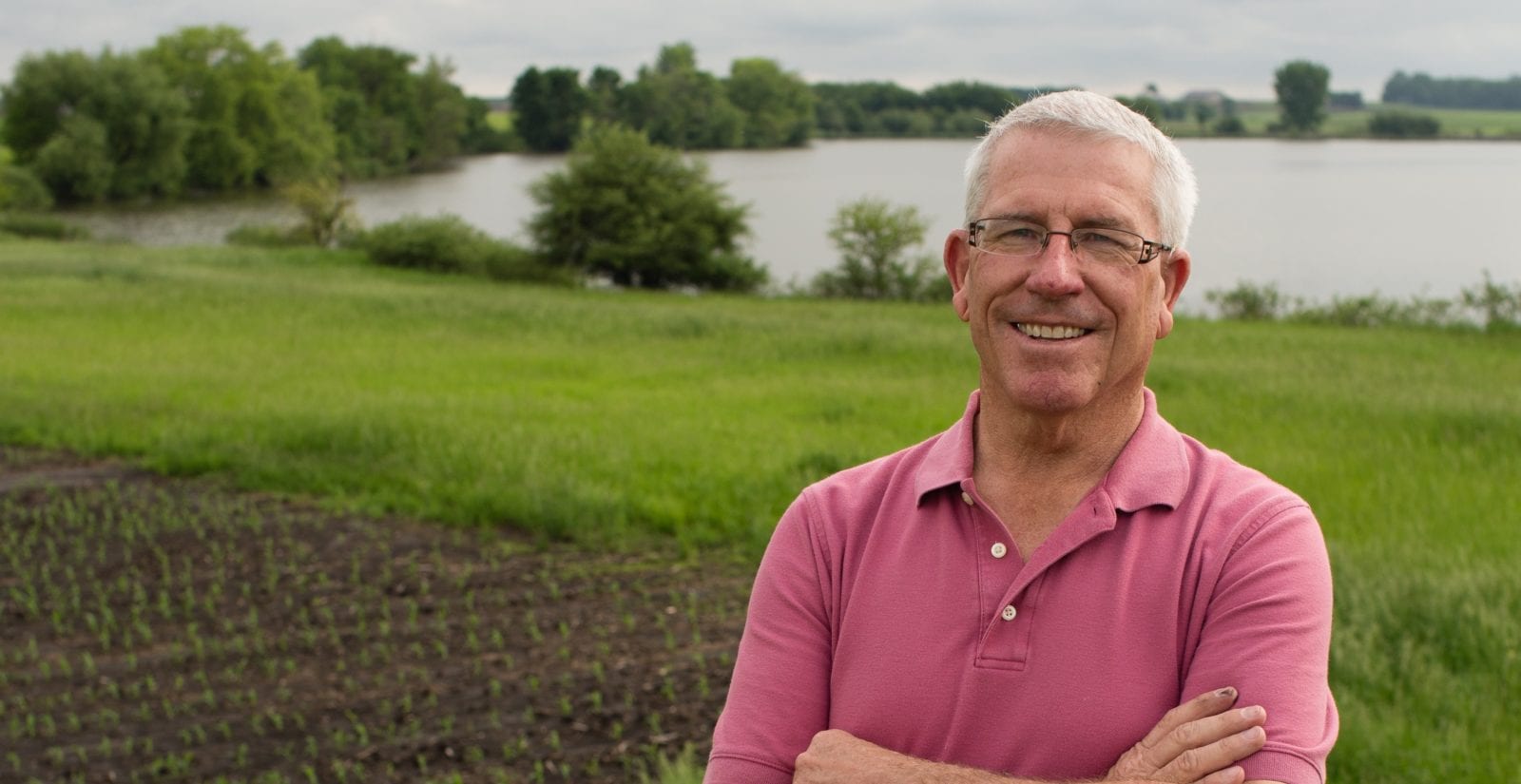Stillman Farms – Emmetsburg, Iowa
Whether there’s sunshine in the sky or snowflakes on the ground, a farmer is always at work. For a crop farmer, fall consists of hundreds of hours in the fields for harvest. But the work doesn’t end there; farmers spend their winters planning and preparing for another successful and sustainable crop the following year.
It’s no different for Jim Stillman, a fourth-generation corn and soybean farmer from Emmetsburg, a town of fewer than 4,000 people in the northern part of Iowa, deep in the heart of the United States’ soybean-rich Midwest. Even though there’s no crop in the field, a farmer’s work doesn’t stop during the winter.
“Once winter begins, you need to sit down and figure out what types of seed you want to use the following year,” Stillman says. “Also, we do any maintenance that is required to our equipment to make sure we are ready for spring. You need to be timely and make sure you can be planted so you can avoid an early frost during harvest here in northern Iowa.”
Stillman met with his seed dealer in December and ordered all of his corn and soybean seed for planting next season. He takes many things into account when deciding which varieties will work best for his farm, Generations Farm Inc., which his great-grandfather started more than 130 years ago.
One factor Stillman takes into account is the quality of his soybeans. As the demand for protein increases around the world, so does the need for high-quality soybean meal.
“We soil sample every four years, so that we have an idea of what our nutrient levels are, and we fertilize according to our nutrient levels, soil types and what yields we have been getting,” Stillman explains. “We select hybrids that will be high-yielding in specific areas. We use an in-depth process in choosing varieties, so that we can continue to provide our customers with a high-quality product.”
Stillman says varieties and technology change from year to year, but the crops he grows don’t. He alternates his fields between corn and soybeans every year, a formula that works well for his operation and the environment.
“We have a 50-50 rotation of corn and soybeans on our farm. That’s been our standard for a while now. It’s been very sustainable for us.”
Stillman’s crops remain the same, but he knows that he cannot maintain the status quo in all areas if he wants to improve his farm’s efficiency and sustainability.
“We put up a new grain bin right before harvest started,” he says. “We also traded in for a 24-row planter that we will use to plant this spring. We recently added more acres of cropland, so we wanted to make sure the planting can continue to be efficient.”
Investing in new farm equipment, storage and additional acreage is common for farmers, and so is using new sustainability practices. With so many customers of U.S. soy concerned about the sustainability of the products they buy, Stillman wants to make sure his crops meet their needs.
Stillman’s planters and sprayers can be controlled with a great degree of accuracy in order to prevent any seed or chemicals from overlapping. He also has a 100-foot-wide grass filter strip around his farm’s lake to retain any soil runoff. Over the past four years, Stillman has also cut his nitrogen use by 25 percent without affecting his crops’ performance.
“We are doing everything we can to be sustainable,” Stillman adds. “We want to continue providing an excellent crop that we can export. We want to continue improving our quality and yields and deliver our crops in a timely manner so we can meet our international customers’ needs.”
Snow partially covers the ground of Jim Stillman’s farm in Emmetsburg, Iowa, in the northern part of the United States’ soybean belt. He takes advantage of this time of year to improve the efficiency of his operation and make management decisions that will ensure his crops meet customer needs.
Jim Stillman stands in front of his farm’s lake last spring. He maintains a 100-foot-wide grass filter strip around the lake to retain any soil runoff.


